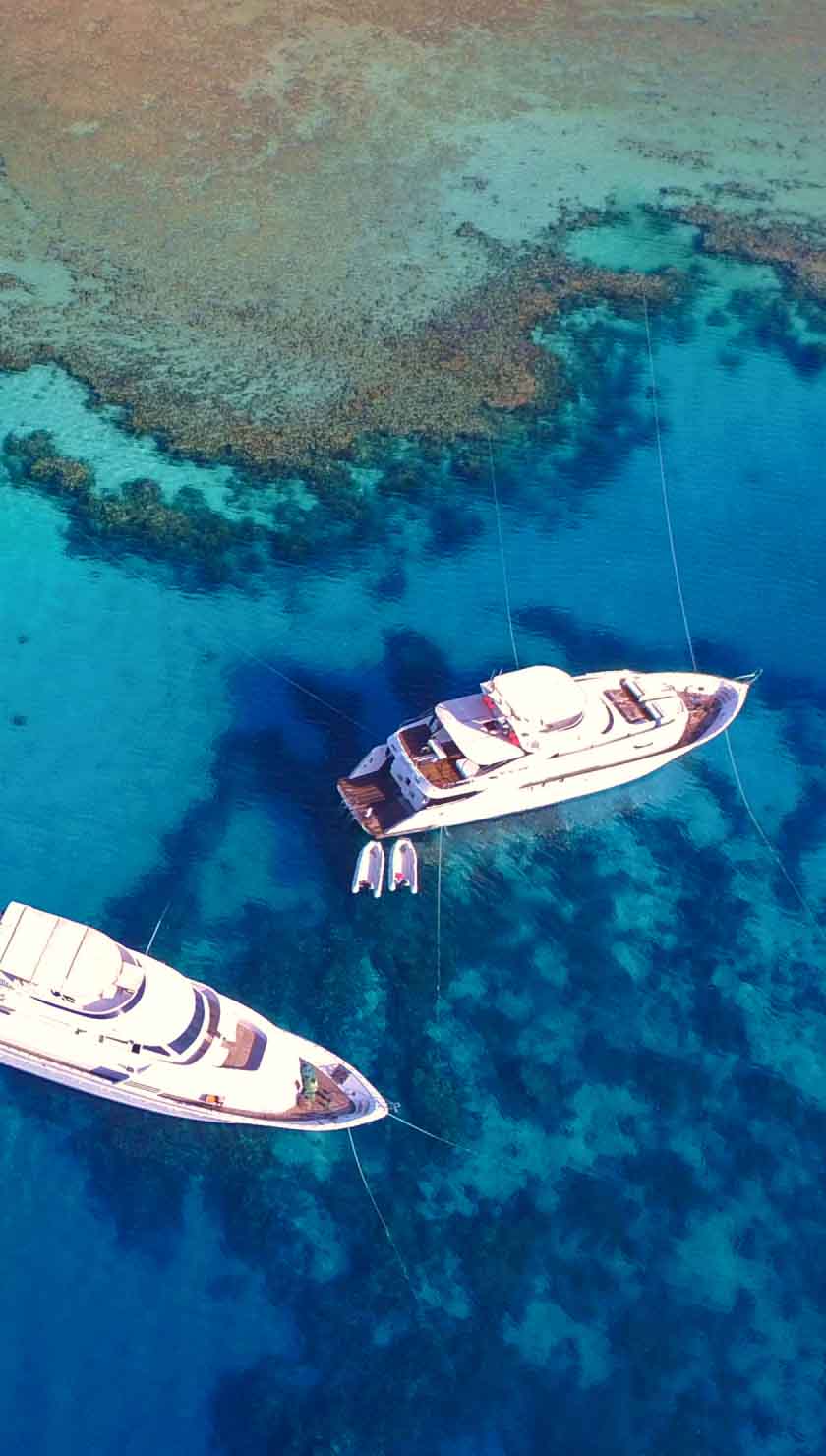Liveaboard Diving in St. Johns
What to Expect On A St John's Reef Liveaboard
Liveaboards to St. Johns, Egypt will visit this area located in the southern Red Sea, more than 200 km/ 124 miles South of Marsa Alam, St. John's island sits in the inlet of Foul Bay. It is one of a number of small islands inside the bay which, despite its ominous name, is home to some of the best waters for diving in the region. The island and the surrounding reefs are part of the Elba National Park which covers a very large area of land and islands close to the Sudanese border. Though both nations have expressed great interest in the region because of its natural beauty and international appeal the area is currently under the protection of the Egyptian National Park. This means that fortunately, the area is well protected on land and underwater. A good selection of Egyptian Liveaboards run popular itineraries to St.Johns throughout the year.
The St. John's 'reef' is actually a number of reefs all around the island. They cover around 290 square kilometres with a wealth of diverse dive sites on offer. Due to their remote location St.Johns is recommended to be visited on a liveaboard dive cruise. These reefs are home to a huge selection of beautiful hard and soft corals and numerous reef fish and sharks. There are also a huge number of atmospheric caves and caverns, swim-throughs and tunnels and deep drop-offs for spotting the bigger fish.
Daily Schedule (example)
Morning - The very first dive of the day will be as early as possible to enjoy as much time underwater as possible. After a quick snack and a coffee on board there will be a briefing from the guide on the site and conditions. Although it is one reef system the dives vary substantially, so be sure to keep a good ear out during the briefing for conditions and warnings.
After the briefing everyone will head to the dive deck and prepare, many of these dives are perfect depth for Nitrox so most people will have to analyse before kitting up. The groups will be dropped and picked up by small tenders at the dive site.
Afternoon - After a proper breakfast there will be another three dives in the afternoon with a lunch break in between. There will often be an opportunity for night or sunset dives later in the day in certain areas of the reef.
St. John's Underwater
The reefs of St. John's are varied in depth, topography and wildlife. Habili Ali to the East end of St. John's is a submerged shallow plateau with huge drop-offs on all sides. The walls are spectacular for gorgonias and black coral and anemone as well as grey reef sharks, barracuda and napoleon wrasse. There are also passing visitors with the occasional manta, oceanic whitetips and even occasional hammerheads. There is also a chance to see pods of dolphins which can appear from nowhere and take over the reef. The visibility can be up to 35 meters on a good day but the currents here gets very strong which considering the sheer drop-offs makes it a site for advanced divers only.
In addition to reefs with all-round walls like Habili Ali and Habili Gafaar there are also slightly more relaxed dives like the strangely named Dangerous Reef. Here the current is much less and Dangerous Reef benefits from a flat bottom at 20 meters instead of a deep drop-off. There are some easy swim throughs and lots of squid and eels, perfect for a night dive.
Caves are also a big attraction with St. John's Caves being one of the best. Coral encrusted swim throughs and chimneys are everywhere along with beautifully lit caverns. Unsurprisingly, eels and huge shoals of cardinal fish are a common sight here along with soft and hard corrals and all kinds of reef fish.
Top Tips for St. John's Reef
- An SMB is a must, with so many boats around these very popular sites surfacing without one can be very hazardous.
- Keep an eye on your depth gauge or consider a depth alarm on your computer especially since a lot of boats use EANitrox.
- Be very careful when diving in caverns and swimthroughs as there is hard coral and sharp rocks all around these spaces.
Getting to St. John's Reef
Most Egypt Liveaboards going to St. John's depart from Port Ghalib, 1 hour from the resort of Marsa Alam. Marsa Alam has its own international airport with connecting flights to most major European destinations. Alternatively, Hurghada airport has a wider range of departure ports but is around a four-hour transfer from Port Ghalib. Be aware that most companies will charge extra for a transfer from Hurghada to the departure port.
The reef itself is an overnight sail, around 14 hours in transit from Port Ghalib. It is possible for liveaboards to make the journey in one sailing and arrive in St. John's early morning. However, this reef is often part of an itinerary that includes Daedalus and Fury Shoals so they may stop of there first, before moving on to St. John's. Other Southern itineraries take in St. John's and the neighbouring Rocky Island and Zabargad dive sites. Liveaboards will often anchor a little further away and drop and pick up divers at the dive sites by small tenders.











